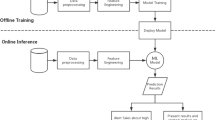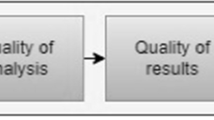Abstract
With the increasing competition in the banking industry, accurate prediction of banking customer churn has become an important way in managing customer relationships. To explore efficacy features, enhance the generalization performance of customer churn prediction, this study proposed a XGBoost model with feature fusion for banking customer churn prediction. At first, a feature fusion model based on improved RFM and Affinity Propagation clustering was proposed to extract features representing the long-term and dynamic behavior of customers. By integrating different types of features, a XGBoost model was proposed to predict customer churn. Experimental results demonstrate the superior performance of the proposed model in comparison to other benchmark models.
Access this chapter
Tax calculation will be finalised at checkout
Purchases are for personal use only
Similar content being viewed by others
References
Hadden, J., Tiwari, A., Roy, R., Ruta, D.: Computer assisted customer churn management: state-of-the-art and future trends. Comput. Oper. Res. 34(10), 2902–2917 (2007)
Janssens, B., Bogaert, M., Bagué, A., Van den Poel, D.: B2Boost: instance-dependent profit-driven modelling of B2B churn. Ann. Oper. Res. (2022). https://doi.org/10.1007/s10479-022-04631-5
Liu, Y., Fan, J., Zhang, J., Yin, X., Song, Z.: Research on telecom customer churn prediction based on ensemble learning. J. Intell. Inf. Syst. 60(3), 759–775 (2023)
Amin, A., Adnan, A., Anwar, S.: An adaptive learning approach for customer churn prediction in the telecommunication industry using evolutionary computation and Naive Bayes. Appl. Soft Comput. 137, 110103 (2023)
Kurtcan, B.D., Ozcan, T.: Predicting customer churn using grey wolf optimization‐based support vector machine with principal component analysis. J. Forecast. 42(6), 1329–1340 (2023). https://doi.org/10.1002/for.2960
Sebastiaan, H., Eugen, S., Bart, B.: Broucke seppe vanden, and verdonck tim, “profit driven decision trees for churn prediction.” Eur. J. Oper. Res. 284(3), 920–933 (2020)
Eugen, S.: Vanden broucke seppe, antonio katrien, baesens bart, and snoeck monique, “profit maximizing logistic model for customer churn prediction using genetic algorithms.” Swarm Evol. Comput. 40, 116–130 (2018)
Xie, Y., Li, X., Ngai, E.W.T., Ying, W.: Customer churn prediction using improved balanced random forests. Exp. Syst. Appl. 36(3 Part 1), 5445–5449 (2009)
Wu, Z., Jing, L., Wu, B., Jin, L.: A PCA-AdaBoost model for E-commerce customer churn prediction. Ann. Oper. Res. 1−18 (2022)
Zhuang, Y.: Research on E-commerce customer churn prediction based on improved value model and XG-Boost algorithm. Manag. Sci. Eng. 12(3), 51−56, 3 (2018)
Mena, G., Coussement, K., De Bock, K.W., De Caigny, A., Lessmann, S.: Exploiting time-varying RFM measures for customer churn prediction with deep neural networks. Ann. Oper. Res. (2023). https://doi.org/10.1007/s10479-023-05259-9
Frey, B.J., Dueck, D.: Clustering by passing messages between data points. Science 315(5814), 972–976 (2007)
Chen, T., Guestrin, C.: XGBoost: a scalable tree boosting system, vol. 1603. arXiv e-prints arXiv:1603.02754 (2016)
Acknowledgement
This work was supported by the Major Research Project of the Ministry of Education on Philosophy and Social Sciences (20JZD024), and the 2022 WHU-DKU Joint Seeding Program (XXWHUDKUZZJJ202303).
Author information
Authors and Affiliations
Corresponding author
Editor information
Editors and Affiliations
Rights and permissions
Copyright information
© 2024 The Author(s), under exclusive license to Springer Nature Switzerland AG
About this paper
Cite this paper
Hu, Z., Dong, F., Wu, J., Misir, M. (2024). Prediction of Banking Customer Churn Based on XGBoost with Feature Fusion. In: Tu, Y.P., Chi, M. (eds) E-Business. New Challenges and Opportunities for Digital-Enabled Intelligent Future. WHICEB 2024. Lecture Notes in Business Information Processing, vol 517. Springer, Cham. https://doi.org/10.1007/978-3-031-60324-2_13
Download citation
DOI: https://doi.org/10.1007/978-3-031-60324-2_13
Published:
Publisher Name: Springer, Cham
Print ISBN: 978-3-031-60326-6
Online ISBN: 978-3-031-60324-2
eBook Packages: Computer ScienceComputer Science (R0)




